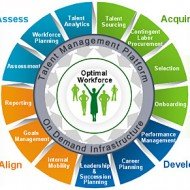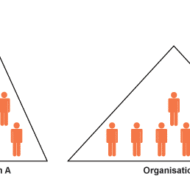Posted by Managementguru in Change management, How To, Human Resource, Motivation, Training & Development
on Nov 25th, 2016 | 0 comments

“A goal should scare you a little and excite you a lot.” “A dream written down with a date becomes a goal. A goal broken down into steps becomes a plan. A plan backed by action makes your dreams come true.” “If a goal is worth having, it’s worth blocking out the time in your day-to-day life necessary to achieve it.” “Set a goal that makes you want to jump out of bed every morning.” “A goal without a plan is just a wish.” “Goals are like an address we punch into our navigation system that tells us which direction to go.” “Seeing your goal written in ink, on paper will have a powerful effect on your mind.” “Decide what you want. Decide what you are willing to exchange for it. Establish your goals and go to work.” Share one GREAT goal you’re looking to achieve this year with the rest of the community in the comment section below! Take print-outs using the print friendly icon in the share buttons. The Five Golden Rules Set Goals that Motivate You Set SMART Goals Set Goals in Writing Make an Action Plan Stick With...

Posted by Managementguru in Change management, Entrepreneurship, Human Resource, Training & Development
on Apr 11th, 2014 | 0 comments

Basic Trends in HRD – #Human Resource Development The basic motive of HRD would be to develop an enduring and healthy #work culture. It should also take into its fold the #training and developmental aspects of the workforce that forms the significant segment of the organization. It is a means to improve the overall organizational effectiveness but not an end in itself. HRD Philosophy: The philosophy of an organization is understood through #policies and operations and not merely through its programmes. HRD policies, #plans and action must commence from business #strategy. The key to the success of HRD is undoubtedly good industrial relations enhanced by effective #employee participation and existence of good #collective bargaining machinery. A Source of Motivation: Though #man power planning, training and #appraisal seem to be the core activities of HRD, it must also be used as an instrument for changing the work culture and motivating the workforce. This considerably improves the network of communication resulting in a sea change or turn around in terms of employee participation and #commitment. Concept of HRD: The #business environment is dynamic and so are the demands of the market. It is but important to review the organization structure to meet these demands of the changed environment. To establish and endure a #productive work culture to bring about improvements in organizational as well as technological disciplines. To train and develop employees in new skills for new #technology advanced operations and effective #performance. To bring about progress in the motivational #climate of the organization To bring the systems and procedures in line to deliver the expected results To reinforce participative culture and safety systems To maintain peaceful industrial relations in the production environment To revamp man power planning in order to match the individuals with jobs to #optimize utilization of available skills. Changing Environment: The process of HRD is directly linked to OD to facilitate the development of an organization in totality. To restructure organization in terms of #physical resource, #monetary resource and technology, one has to first understand the changes happening and challenges existing in the immediate external environment. Some of them would be #Competitor Pressure #Globalization of markets Rising aspirations of people at large Governmental policies etc., How has HR used #social media? A relatively late-adaptor, HR has largely used social media in recruitment…and indeed how!!! – In 2010 in US, only 6% of companies were using social media for recruitment, now that has exploded to 89% – 82 of the Fortune 100 companies uses the corporate hiring solutions of #LinkedIn – About 21% of working professionals are looking for a job – social media helps companies tap into the other 79% as well. Bullhorn’s 2012 Social Recruiting Activity Report says:“A #Twitter follower is almost 3 times more likely to apply to a job posting than a LinkedIn connection and 8 times more likely to apply than a #Facebook friend.” Human Resources professionals understand that social media ishere to stay…That’s the easy answer!!!The challenge is integrating use of a cohesive, relevant andeffective social media strategy aligned to the overall HR & business strategy of the organization. Information Courtesy – by National HRD...

Posted by Managementguru in Business Management, Organisational behaviour, Principles of Management
on Mar 3rd, 2014 | 0 comments

Levels of Organization An organization is a network consisting of people interacting to accomplish the enterprise objectives. The inter relationship is always complex as groups tend to develop conflicts and difference of opinion among themselves and in between. Hence the structure of an organization should be designed to clarify who is to do what task and who is responsible for what results and to furnish decision-making devoid of uncertainty. Organization implies to Recognizing and classifying the required activities Grouping of activities in order to achieve the objectives Appointing a manager and assigning him with the necessary authority to lead each group The provision for co-ordination vertically and horizontally “Organization is the establishment of authority and relationships with provision for coordination between them, both vertically and horizontally in the enterprise structure,” According to Koontz. FORMAL ORGANISATION It implies a formalized intentional structure of roles or positions. Formal organization must be flexible. The formal structure is laid down by the top management The levels are designed on the basis of specialization Purely task oriented and not people oriented Rules are very stringent and everyone is expected to follow them without fail INFORMAL ORGANISATION A network of personal and social relations arising spontaneously as people associate with one another and not restricted by the formal rules or structure. One important aspect of organizing is the establishment of department. Department designates a distinct area, division, or branch of an organization over which a manager has authority for the performance of specified activities. Spontaneous in nature More people oriented Based on religion, culture, common problems faced by the workforce etc., Membership is voluntary and the same person can be a member of many groups. ORGANISATION LEVELS AND SPAN OF MANAGEMENT Why there is a need to organize? To co-ordinate the activities of the people involved in the organization’s functions for which there needs to be certain levels established to facilitate the co-operation effective. There are two types of spans, 1. Wide span 2. Narrow span Pic Courtesy: LumenLearning WIDE SPAN: Wide span of management has fewer organizational levels with more number of sub-ordinates reporting to a superior. Though it proves advantageous for the superior as delegation becomes part of the process and hence work is shared, care must be taken in selecting the right people for completion of tasks and clear policies must be made to avoid confusion. There is this tendency of overloaded superiors to become decision bottlenecks and there exists the danger of superior’s loss of control too. This kind of management needs exceptionally qualified managers to lead the respective groups. NARROW SPAN: Narrow span of management involves many organizational levels with fewer number of employees reporting to a superior. This facilitates close supervision, close control and fast communication between superiors and subordinates. On the contrary, superiors tend to get too involved in subordinates’ work and this kind of management incurs higher costs due to many levels in the organization and there is excessive distance between the lowest and top most levels. FACTORS DETERMINING AN EFFECTIVE SPAN: 1. Training of Subordinates: Well trained subordinates save much time and energy of the superiors and training has to be a continuous process as the technological policies and procedures are subjected to change periodically. 2. Clarity of Delegation of Authority: Clarity implies direction and guidance from the manager’s end to the subordinate. A manager has the responsibility of clearly explaining the task and the methods involved to complete the task in a suitable manner to his subordinates. In cases of machine handling, “On the Job Training” becomes inevitable. If not, the work will not be completed as per the schedule due to lack of clarity. 3. Clarity of Plans: In a production environment, the workers have to be...






